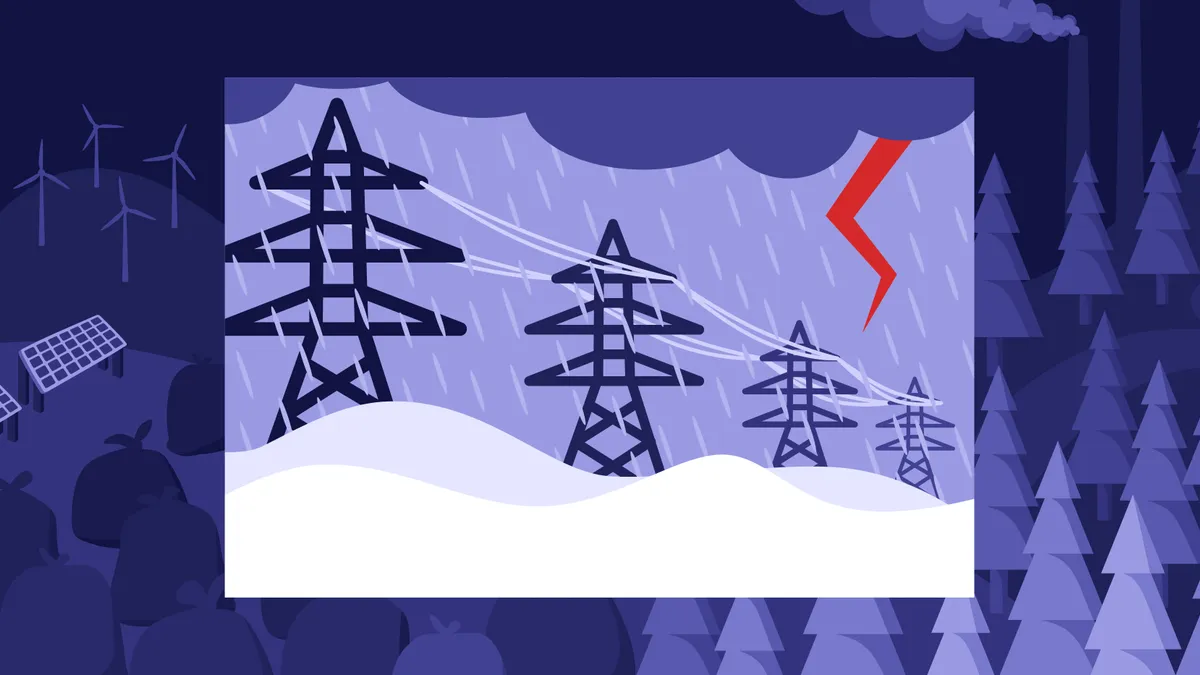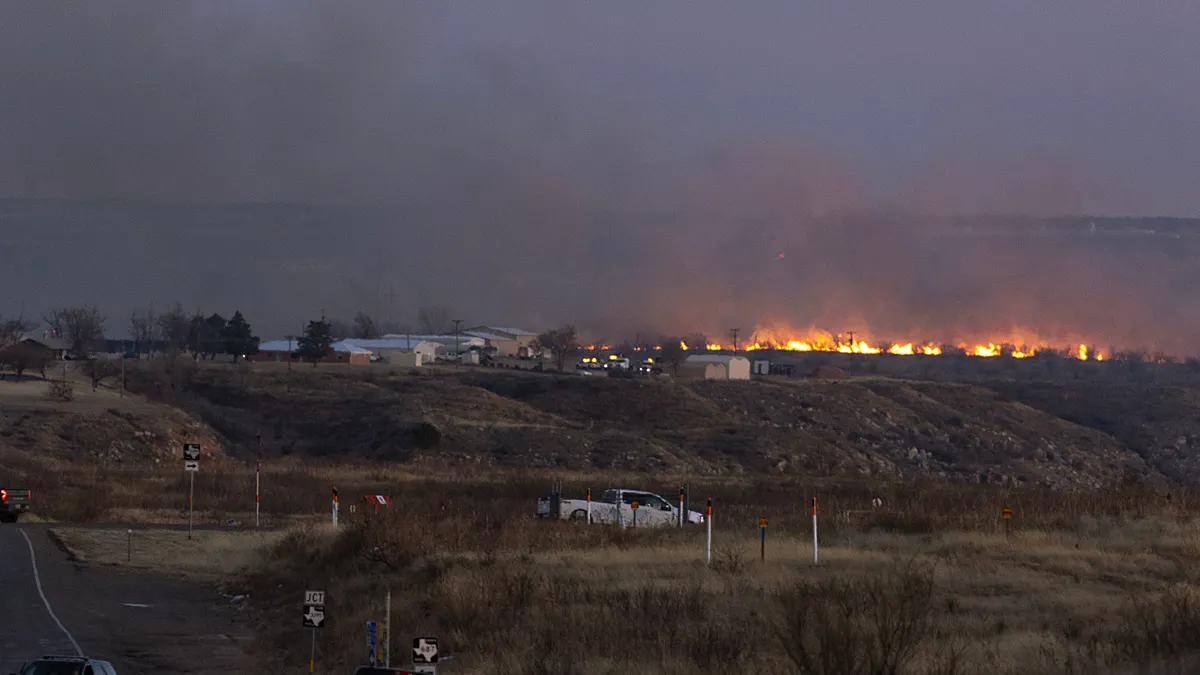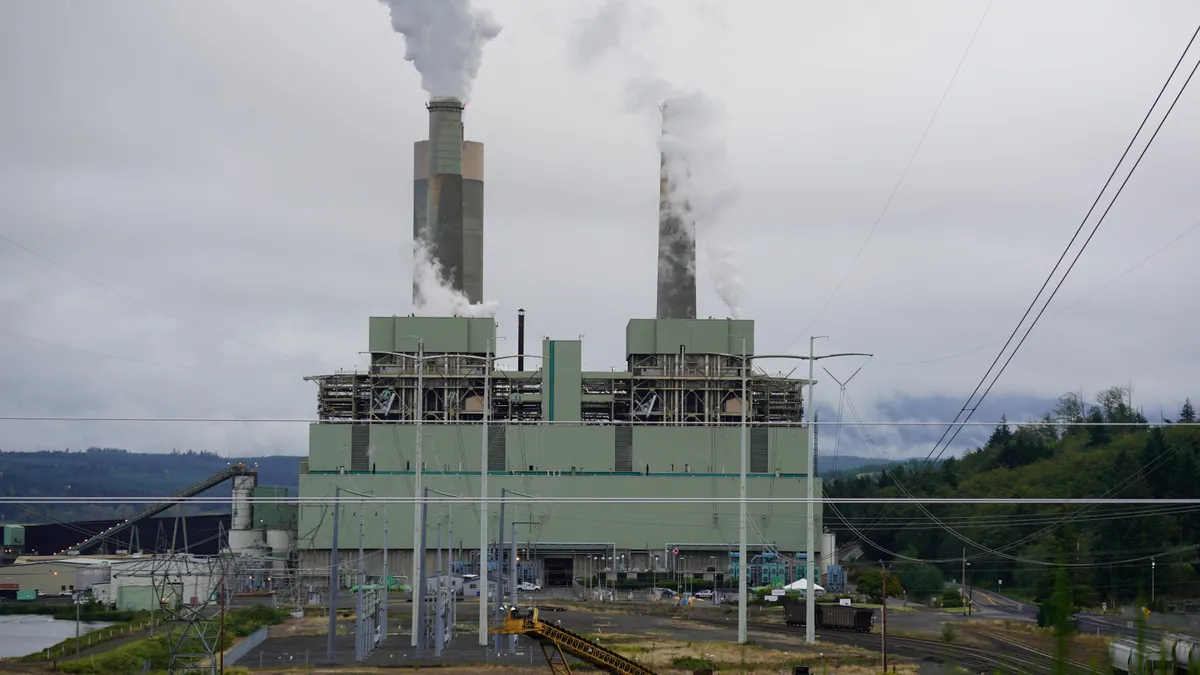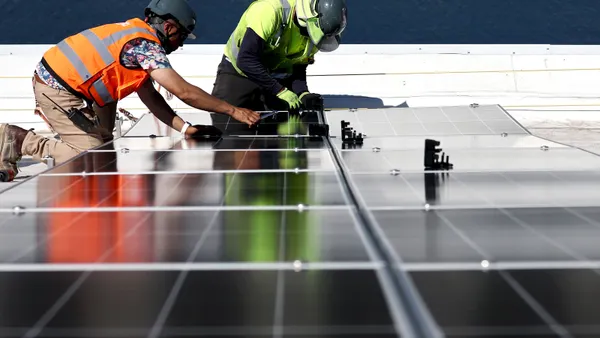Securitization is a financial tool that can reduce utility debt with low interest bonds secured by ratepayers, and with utilities' growing costs related to COVID-19, the energy transition, and climate change, interest is accelerating.
But utilities and their customers are facing hundreds of millions or even billions of dollars in such costs, which is raising oversight concerns. When oversight has been introduced, it has led to lower interest rates and lower transaction costs, stakeholders in such proceedings told Utility Dive.
Duke Energy's $1 billion proposal to use securitization to meet storm recovery expenses in North Carolina provides the criteria necessary for the commission to evaluate Duke Energy's proposed transactions, Duke spokesperson Meredith Archie said in an email. It allows the commission "to determine whether and to what extent it wants to be involved in the transaction once it issues its order."
State laws "should encourage regulators to ask what incentives are involved when big banks and a big utility work together and whether those incentives align with the public interest."

Ron Lehr
Former Colorado Public Utilities Commission Chair
But clear state laws on securitization are needed to "protect the public," former Colorado Public Utilities Commission Chair and authority on securitization Ron Lehr said. State laws "should encourage regulators to ask what incentives are involved when big banks and a big utility work together and whether those incentives align with the public interest."
Utilities and customer advocates differ on oversight. Duke, though committed to legislative and regulatory guidance on securitization, argued in its proceeding that it can manage bond term negotiations, and the financial transactions that follow, on its own. But with hundreds of billions in potentially securitized dollars at stake, customer advocates contend experts representing ratepayers should have a role in those negotiations.
Securitization is coming
Securitization allows utilities to offer long-term bonds to investors to pay off short-term debt. According to a 2018 Moody's report, it "can be a credit positive tool for regulated utilities" because it is an "immediate source of cash" and can "avoid potentially credit negative events" like continued reliance on uneconomic fossil generation.
Ratepayers benefit because the cost of the securitized debt is lower than the utility's typical cost of debt, which reduces the monthly bill impact, Moody's added. The bonds have lower interest rates because they are long-term and secured by the high likelihood of customers paying their bills. But enabling state legislation is necessary for credit agencies to provide the AAA credit rating for securitized debt that makes interest rates low.
At least five states passed legislation approving regulatory consideration of securitization by utility regulators in 2019, and at least 18 others have some kind of regulatory, legislative or advocacy effort in the works, according to Energy Innovation and others.
The 2020s are likely to see a lot more securitizations, said RMI Electricity Practice Principal and Stanford-Precourt Institute for Energy Research Associate Uday Varadarajan.
The Biden administration's commitment to addressing climate issues is likely to accelerate retirements among the approximately 130 GW of remaining operating coal plant assets, he said, leaving about $90 billion in stranded costs eligible for securitization, not counting gas plants or other infrastructure that could be eligible.
"[E]ven if securitization’s benefits are diluted, it can be of significant value to ratepayers because interest rates are almost always reduced" compared to typical utility interest rates.

Uday Varadarajan
Principal, RMI Electricity Practice
It also does not include the huge debt associated with COVID-19, he added.
Shutoff moratoria allowing COVID-19-impacted residential and small business customers to defer utility payments without losing service have been invaluable to millions, according to the National Energy Assistance Directors' Association (NEADA). But when the pandemic fades, national economic recovery could be impacted by potentially huge debts to utilities, NEADA added.
The December stimulus bill included $25 billion for unpaid rent and utility bills, and the Biden proposal would add $5 billion, but unpaid 2020 bills could require up to $70 billion, according to Moody's Analytics Chief Economist Mark Zandi. Unpaid utility bills alone could reach $35 billion to $40 billion by March 2021, NEADA Executive Director Mark Wolfe said in November. And much of the debt has yet to be included in their estimates.
Securitization could address that debt, though state-enabling legislation is inconsistent in availability and in providing robust oversight, RMI's Varadarajan said. "But even if securitization's benefits are diluted, it can be of significant value to ratepayers because interest rates are almost always reduced" compared to typical utility interest rates.
Arguments for better oversight are, however, "critically important," he added. The utility is responsible to its shareholders and the bank underwriting the securitized bonds, which means "utility and ratepayer interests might not be aligned."
Customer protections
There are two key areas of oversight needed to protect customers as the billions of dollars in securitized offerings mount, according to Saber Partners CEO and securitization negotiations expert Joseph Fichera.
First, customers need to be represented in the negotiations.
There have been relatively few securitizations, and things like loan term, loan amount, and factors in the larger economy have varied significantly, Fichera acknowledged. But the limited data shows securitization negotiations that include ratepayer representatives have better results for customers, he said.
Past proceedings involving Duke Energy Florida, Centerpoint Energy Texas, and West Virginia's Allegheny Power-Energy substantiated his concerns, Fichera said.
In Duke Energy Florida's 2015-16 securitizations for storm recovery, Saber proposed a set of longer-term bonds than those proposed by the utility and its bankers, Fichera said. And the ones selected by regulators saved the utility's customers "over $3 million on a net present value basis by achieving interest rates closer to those from long-term Treasury bonds."
Financial advisor expertise was "instrumental" in obtaining customer savings in those proceedings, Deputy Public Counsel Charles Rehwinke confirmed in June 2016 Florida Public Service Commission testimony.
"These are issuances of hundreds of millions of dollars, and just a few tenths of a percent in inflated transaction charges can be real money."

Mike Florio
GridWorks Senior Fellow and former California utilities commissioner
Saber similarly contributed to significant customer savings in a 2009 West Virginia securitization case and a 2005 proceeding for Texas CenterPoint Energy.
Regulators can and do order the utility's bank to use interest rates as close as possible to U.S. Treasury bond rates, Fichera said. But having a ratepayer representative in the negotiations assures the utility's bank follows the order to obtain "the lowest rate possible."
The second type of needed oversight is protecting customers from excessive transaction charges as the funds are dispersed and repaid, Fichera said.
In the 2015-2016 Florida securitization, Duke's initial estimate of set-up and billing service costs were between $1.9 million and $2.9 million, Saber Senior Advisor Paul Sutherland said in an email. After Saber "analysis and pushback," the utility settled on a cost of $395,000. Saber-identified unnecessary costs in West Virginia's Allegheny Power-Energy 2007 securitization of coal plant upgrade costs led to $1.1 million in ratepayer savings, he added.
Three other "best practices" essential to regulatory proceedings on securitization described in April 2006 testimony to the Florida commission remain current, Fichera wrote. The first is that "decisions affecting ratepayers should be made in conjunction with someone with a specific and direct fiduciary duty to ratepayers."
In addition, the standard for securitizations must be "the maximum present value savings for ratepayers," he added. In the absence of that standard, "underwriters and investors will have the negotiating leverage to dictate a final cost to ratepayers."
A third best practice is that every element of the final agreement must be certified by the utility, the underwriters and an independent advisor, in writing, as meeting that standard, he said.
These customer protections are not essential to obtaining AAA ratings, Moody's Vice President and Senior Analyst Robert Petrosino said. The key is enabling legislation that allows the bond to be secured by customers. "Even without the lowest rates and transaction charges, a long-term, AAA-rated security will lower utility and customer costs."
Securitization proceedings on utility proposals should and typically do include oversight from commissioners and consumer advocates, Petrosino acknowledged. "But whether the negotiation includes a team representing ratepayers is not relevant to the rating agency because pricing is determined by the marketplace and nobody else."
Other experts said negotiations in securitization proceedings do require advisors on behalf consumers.
Regulators, utilities, lawmakers and ratepayers – oh my!
Regulators and utilities agree authority on securitization should be in enabling state law to make certain proceedings are done with high standards and are backed by the authority of the state.
In California, use of securitization to recover wildfire-related losses for utilities, some of it already approved, could involve as much as $12.5 billion. Its use for COVID-19 losses is also under discussion.
The commission "can only approve a securitization when we have legislative authorization to do so for a special purpose," said California Public Utilities Commission (CPUC) spokesperson Terrie Prosper. "In our proceedings, public interest interveners participate fully and raise many questions," including on who is to be part of the securitization negotiations and on how transaction costs will be overseen.
Final rulings on securitization debates about how to follow the law's guidance come from an administrative law judge, she added. "If these issues are shown to require active intervention, the CPUC can take appropriate steps."
Utilities expressed confidence that stakeholder proceedings allow ratepayer advocates to be heard, and that they are best positioned to recognize what protections their customers require.
Southern California Edison is "pursuing" what could be a $1.75 billion wildfire mitigation securitization under a CPUC order which "followed a robust, statutorily mandated process," spokesperson Ron Gales said. The proceeding included stakeholder and public input, and the commission's financing order "established a Finance Team to provide oversight into issuance of the securitization bonds."
Duke "will use its best efforts to minimize costs and will certify to the Commission that the bonds provide quantifiable savings" for customers.

Meredith Archie
Duke Spokesperson
Duke Energy Carolinas could have $980 million in securitized bonds for storm damage mitigation in North Carolina by the end of 2021 and its current proceeding filings comply with all state legislative and commission guidance, Duke's Archie said.
In its "many years of experience" with long-term debt issuances, the utility has always used "well-established business standards," representing customers' best interests, she added. In the current proceeding, Duke "will use its best efforts to minimize costs and will certify to the Commission that the bonds provide quantifiable savings" for customers.
In today's utility securitizations, "the utility has no incentive, and no opportunity to create an incentive for itself," for a higher interest rate or more transaction processing revenues, added former Commissioner with the New Mexico Public Regulation Commission Doug Howe. The utility receives the bond proceeds "in an upfront payment" and, afterwards, "is just a middleman with no control."
Ratings agencies and the bond market "determine the rates" and the issuing financial institution has the "legal obligation to obtain the lowest offered rates in the market," Howe said. A "bond trustee" handles implementation and most enabling legislation requires a commission-approved competitive solicitation in which "hundreds of trustees compete" to determine the trustee, he added.
"Legislation can obligate the commission to seek the lowest possible costs for ratepayers, but that does not necessarily mean the implementation will achieve it," GridWorks Senior Fellow and former California utilities commissioner Mike Florio said. "These are issuances of hundreds of millions of dollars, and just a few tenths of a percent in inflated transaction charges can be real money."
With securitizations accelerating in use and size, financial advisors can be important, sometimes in unexpected ways, he added. In a utility bankruptcy during his tenure, "we discovered the tax treatment could affect ratepayer value over time by around a billion dollars, and understanding that allowed reaching a settlement."
Commissions without expertise, but aware that securitizations may benefit both utilities and their customers, might approve negotiations with shortcomings that financial advisors can identify, Lehr added. "Regulators should look for who has what incentives, and where incentives seem antithetical to the public interest, there may be a need for oversight."
The financial obligation of utilities and their financial advisors is to utility shareholders, concluded a September 2020 white paper on securitization-enabling legislation, co-authored by Lehr. To correct that, state legislation should "support the commissions' fiduciary duties to consumers and the public interest."
Legislation should give regulators the authority and resources to carry out robust oversight, Lehr added. That includes "the authority to require evidence in the utility's filing from a bond team representing ratepayers in negotiations on the deal structure and transaction fees."
Legislation should also consider "the many purposes of securitization and not set limits except for the utility taking on too much debt," Lehr said. California can use it for wildfires, Florida can use it for hurricanes, Duke can use it for coal ash cleanup, and West Virginia can use it for pollution control.
"It is probably better policy to authorize securitized bonds and not need them if other better options emerge than to need them and not have the authorization in place," the white paper concluded.























